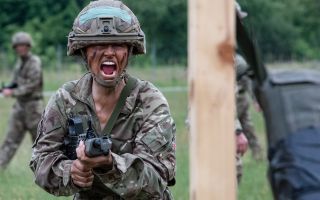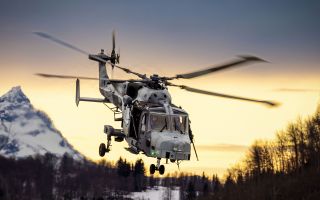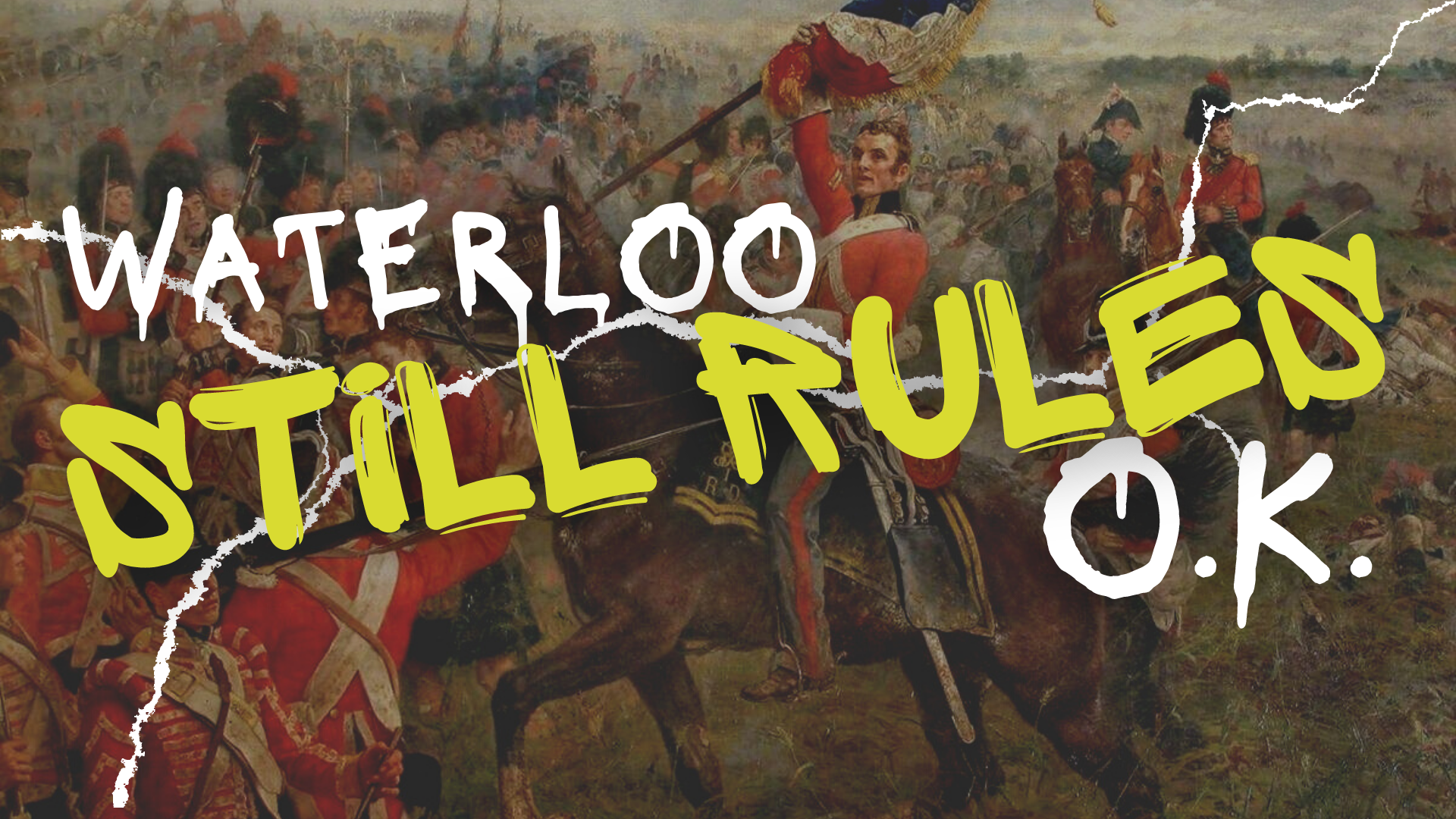
Why Waterloo Still Matters

Waterloo does not really matter all these years on, right?
In an era when school kids are barely taught about the Napoleonic Wars in any great detail, are the ins and outs of one of Europe's most significant conflicts nothing more than footnotes on the pages of semi-modern history?
Well, hold on one moment. Because that is not the case, according to two experts on the subject of Waterloo.
To mark the opening of a new exhibition on Waterloo in London, those specialists have described why the famous battle of 1815 still matters two centuries later.
BFBS spoke to Alex Owen, a former officer in the Blues and Royals, and Peter Storer, a historian working at the Household Cavalry Museum, about the relevance of one of history's most epic battles.
"My my!" - this is why Waterloo still matters. OK. *
Do Children Still Learn About Waterloo In Schools?
The Battle of Waterloo took place on June 18, 1815. Upon its conclusion, it secured peace in Europe for almost a century – until the outbreak of World War One.
But how common is everyday knowledge about Napoleon's final battle, or the wider conflict its conclusion brought an end to?
Are youngsters missing out on crucial political history with its barely fleeting inclusion on school curricula? Or is its occurrence, now over two centuries ago, nothing more than a nostalgic topic of conversation for historians to mull over at conferences within the confines of academia?
Well, according to Peter Storer, a historian who is part of the team behind a new exhibition on the Battle of Waterloo, the battle's "guest appearance" in the National Curriculum should be a matter of concern. In an interview with BFBS, he said:
"I fail to see how anybody can understand why we are where we are, particularly as regards our relationship with the rest of Europe, without at least some rudimentary knowledge of the Napoleonic wars."
However, Alex Owen, also of the Household Cavalry Museum and former officer in the Blues and Royals, told BFBS that he was more concerned about other groups, closer to home, not possessing Waterloo knowledge. Alex said that his worry was that "British soldiers serving in regiments which fought at Waterloo [not knowning] about the heritage they have inherited, and become custodians of, as the regimental successors of those men in 1815." Alex added:
"School level history will, at best, give you an understanding of the major commanders – Napoleon, Wellington and Blucher – but, in my experience, it is the story of the ordinary soldier which strikes the strongest chord with those who serve."
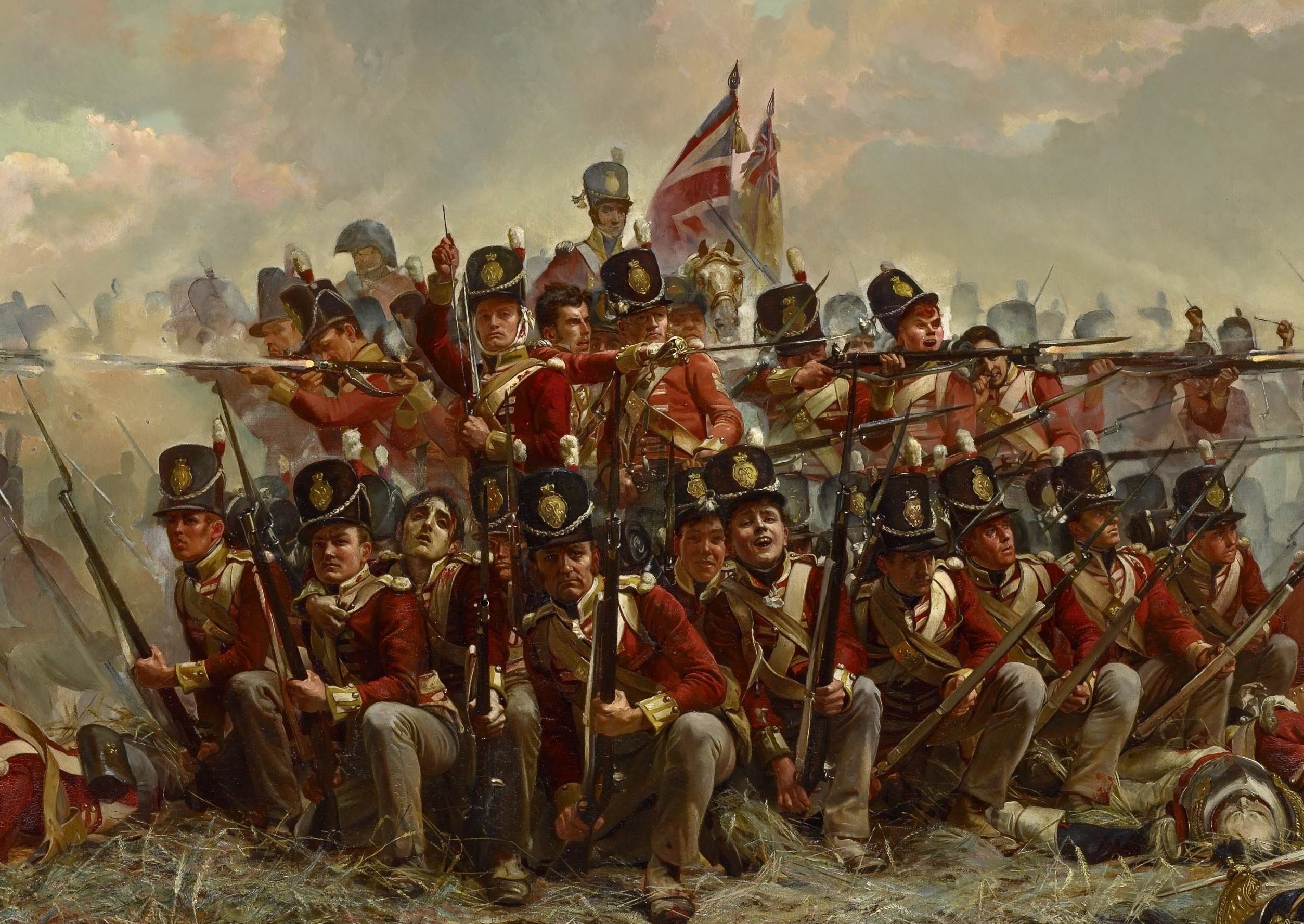
Was Napoleon A Hero Or A Villain?
The answer to the question as to whether Napoleon was one of history's biggest villains or brightest Generals is a complex one, and actually, it depends who you ask.
In France, it is common to see tributes and symbolic references to the defeated French leader more than 200 years on, colleges named in his honour and statues aplenty.
Nevertheless, according to Peter, Napoleon was the "bogeyman" of the 19th century. He said:
"[Napoleon] made no bones about his enmity for [England] and made at least preparatory steps to invading and bringing us under French hegemony by force.
"He wasn't the first or the last Continental despot who found this country at least an irritant.
"Of course to French eyes he was the great exemplar of 'La Gloire' who successively beat, at least until later years, every country and alliance of countries, usually led by reactionary Royal families, who attempted to put the new Republican France back in its box … but there was plenty of propaganda on both sides."
Alex shared some of that apathy. He added that it was "hard not to hold some vestigial views even two centuries later." He added:
"For the French, his status as an unmatched General, charismatic leader and the epitome of revolutionary meritocracy blinds many to the way that his reign involved the invasion, subjugation and oppression of the majority of Europe for two decades. But I think you'd find that this view is also held by many Britons too.
"In the same way that the name of Rommel is better known than that of Horrocks, Browne or even Slim, there is something about facing a 'good baddie' that makes one's eventual victory that much more noteworthy. You've also got to remember that the 19th century was a fiercely nationalistic century that saw titanic power struggles and heralded the birth of colonial expansion. Trafalgar and then Waterloo were the two pivotal moments in this struggle that led to the height of the British Empire – something we are only just now coming to terms with as problematic. But for those who lived in the aftermath of these battles, it's no surprise that it captured imaginations."
He added:
"It's not just Napoleon who has schools and colleges named after him. I actually live in Wellington, Somerset – the town from which Arthur Wellesley took his name. On any given day I might run to the Wellington memorial, visit the Wellesley cinema, have a pint in the Iron Duke before picking my children up form the Wellesley Park School.
"In sum, we are just as guilty as the French in wanting to lionise our great men and women."
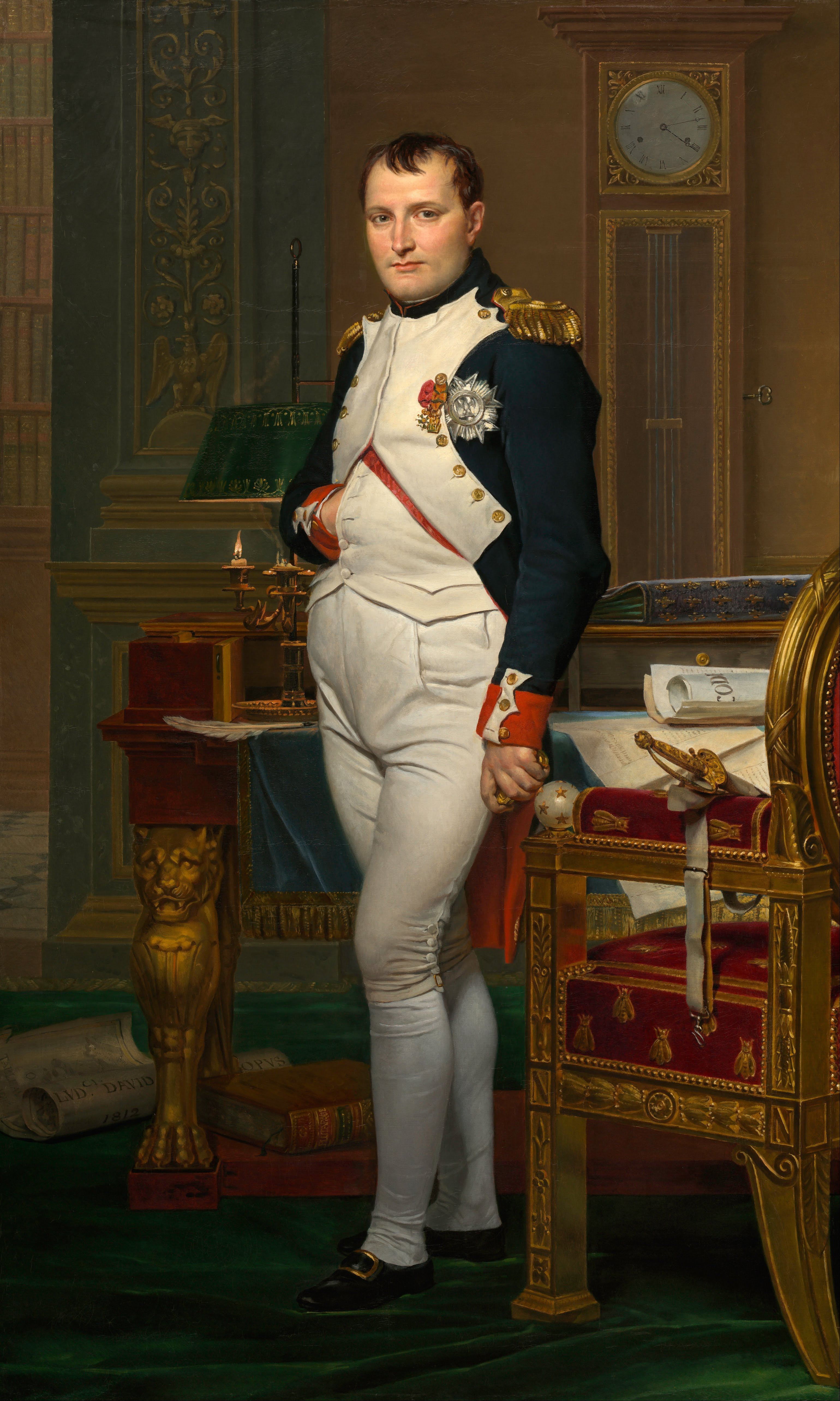
Was Wellington Britain's Greatest General?
Peter reminded BFBS that, unlike Napoleon, "Wellington never lost a battle," adding that "military historians admire [him] as one of the great British Generals of all time." Alex was flattering, too, but drew attention to a societal shift in attitudes towards not just Wellington but many so-called 'great' figures from England's past. He said:
"Lately, we have seen more and more discussions with less jingoistic and more critical themes. Rather than taking these people at face value, we are getting better at getting under the hood of their views and actions and not just blindly holding them up as paragons of virtue.
"This is not about revisionism or cancel culture but about understanding and learning from the past rather than using past figures as black and white totems of good or evil.
"People in the past had views that today are considered problematic. I'm sure the same will be said of us in 200 years' time. With Wellington, we are presented with a man so aristocratic in his character that one of his nicknames was 'The Peer'. He was clearly admired by his men, who called him 'Nosey' behind his back, but he was never one of them. Despite crying when visiting the main breach at Badajoz and seeing so many of his men lying dead, he also called them 'the scum of the earth'".
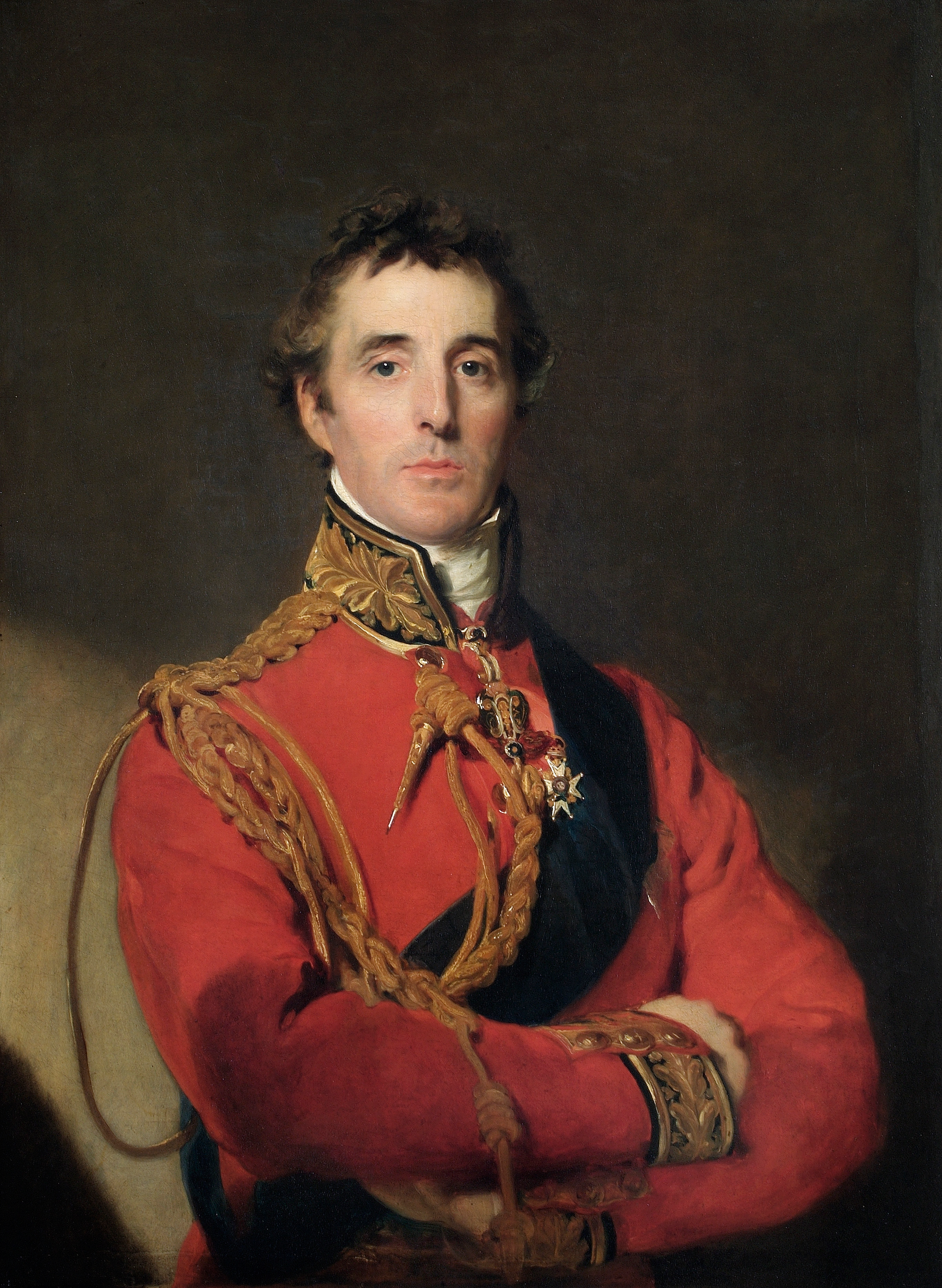
Was Wellington A Good Prime Minister?
Some 13 years after his great victory over Napoleon, Arthur Wellesley, the first Duke of Wellington, served as Prime Minister for two years. However, whereas his military accolades spoke for themselves, his political clout was less magnificent. Peter described this part of Wellington's life as "less successful". Alex added that "constituents are not loyal soldiers you can ask to assault a breach or hold the line."
He added:
"But perhaps the way we remember Wellington is far more lasting and subtle than the way we think of more recent war leaders like Churchill and Thatcher? Every time you order Beef Wellington or put on your wellies for a walk are you not unconsciously reminded of that haughty face looking down his Roman nose from a horse?"

Why Was Victory At Waterloo So Important?
So, why is it a matter of concern that Waterloo features so slimly in most youngsters' education? What was its significance? Alex enlightened BFBS with the impact its occurrence had on 19th-century European life. He said:
"Waterloo ended a series of wars which over 23 years had claimed more lives proportionately in Europe than the Second World War.
"A dark chapter in world history was brought to close on that ridge at Waterloo securing nearly a century of comparative peace in Europe.
"It was also a victory by allied armies, not a British one. I think that is a key point here. The role of British forces today is very rarely in isolation. We rely on our allies as they rely on us. This was as true in 1815."
Does The British Army Teach Soldiers Enough Regimental History?
The route a recruit takes into the British Army can result in differing levels of military history finding its way into initial training syllabuses. For example, in Sandhurst or specialists training establishments such as the Army Foundation College, more time can be afforded to such issues as the Battle of Waterloo.
However, Peter felt that more could be done to ensure all soldiers are aware of their regimental histories. He said that "significantly better teaching of regimental history would help to keep [this knowledge] alive within the army."
Alex suggested that onus was also on the shoulders of the uniformed men and women of those history-rich regiments. He said:
"Be more curious. It's not just about Waterloo either. Know your unit's history. We all have a duty to know whose boots we are walking in, keeping their memory alive and passing it on for future generations.
"Because if we don't do it for them, who will do it for us?
"During ten years in the Household Cavalry my imagination was set ablaze by our Museum on Horse Guards in London. Inside this historical treasure trove are physical items linked directly to names I have seen on paintings, in books or that have horses or barracks named after them. Learning more about a history directly related to the army you serve in is better than any Bernard Cornwall novel."
How Did The Waterloo Exhibition At The Household Cavalry Museum Come About?
In June, the Household Cavalry Mounted Regiment escorted through the streets of West London a captured Napoleonic Eagle acquired during the Battle of Waterloo by a soldier called Francis Styles.
That Eagle, usually kept at the National Army Museum in Chelsea, is now on display at the Household Cavalry Museum on Horse Guards alongside one of Styles' medals – which was recently discovered for sale on eBay by a serving member of the regiment.
These two important and historic Household Cavalry items have never been displayed together.
Remarking on this, Alex said:
"During the first lockdown one of our serving soldiers discovered a long-lost Waterloo medal on eBay in the US. It once belonged to Corporal Francis Styles of the 1st (Royal) Dragoons. When he died in 1828 it was lost to us. The Regiment immediately bought it back and this summer, thanks to the National Army Museum, reunited it with the Napoleonic Eagle captured by Styles at Waterloo with a spectacular parade on Horse Guards. Both the Eagle and the medal are now on display at the Household Cavalry Museum for the summer, together for the first time in nearly two centuries."
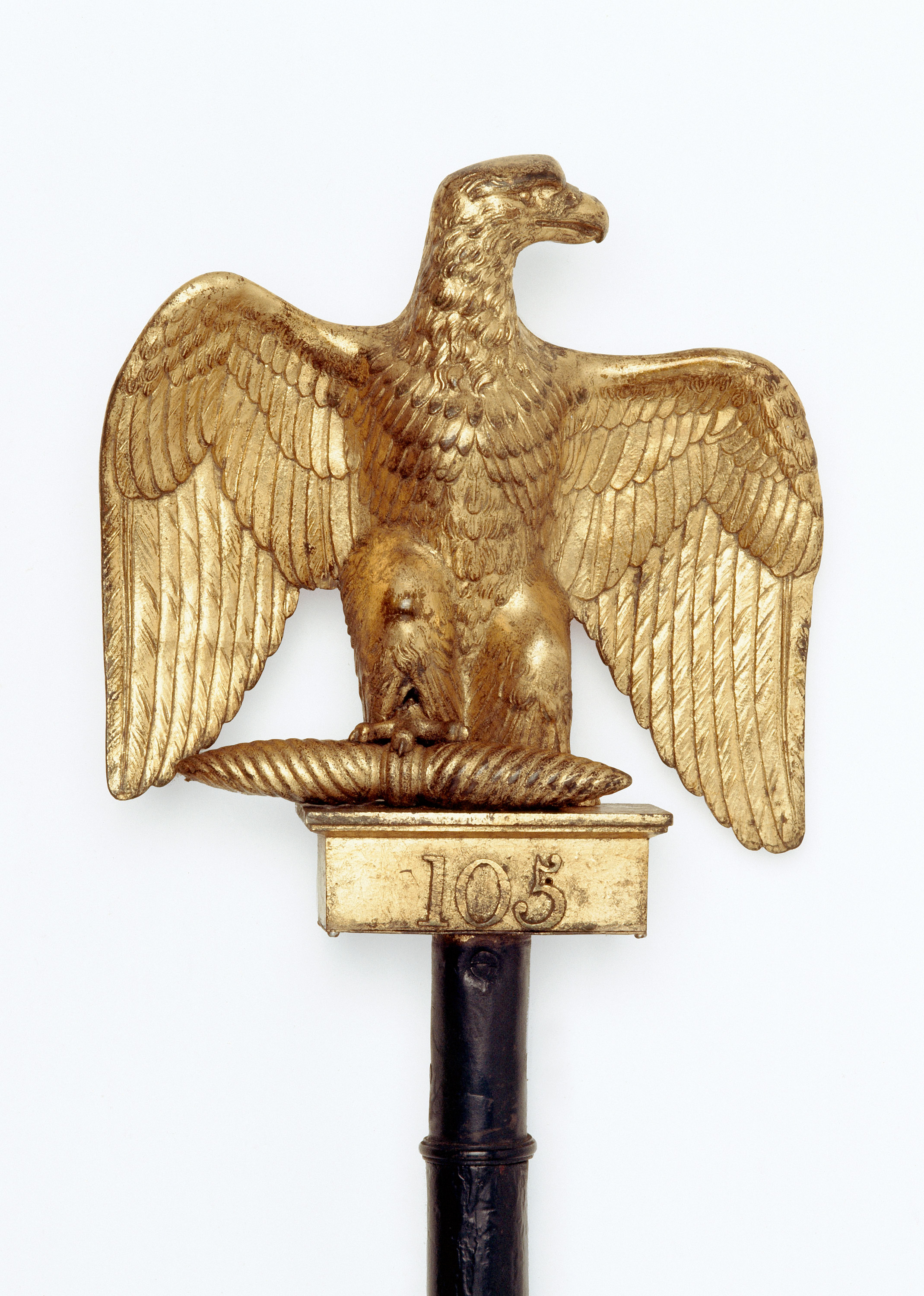
Who Was Francis Styles?
To this day, members of the Blues and Royals wear a badge signifying the capture of the Napoleonic Eagle on their service jackets and tunics' left arms. The story of its capture by Francis Styles is something soldiers have installed in them during the introduction phase of a soldier's career, particularly on the ceremonial side of the regiment.
But who was the man behind the legend?
Peter drew attention to some of his qualities, describing him as a "good, steady, disciplined, reliable and motivated soldier."
"Cpl Styles was not found wanting."
Alex explained some of the background details of the soldier and spoke of the action he and his colleagues faced that day at Waterloo:
"Styles was a London boy. He was brought up in Holborn and joined the 1st (Royal) Dragoons – now the Blues and Royals.
He was a veteran of the Peninsular Campaign, so had been serving under Wellington for years before Waterloo. At Waterloo, he was acting as Standard Coverer, protecting the flanks of his Squadron Leader, Captain Alexander Kennedy Clark. When the Heavy Cavalry was unleashed on the attacking French Corps, the Royals charged straight into the French 105th Regiment, crushing them under hooves, slashing down on heads and necks and putting them to flight. Clark and Styles saw the Eagle of the 105th flying above the packed ranks and immediately went for it. While Clark dispatched the bearer, Styles caught the falling standard and took it to the rear as one of the two eagles captured during the battle.
"After the battle Styles was promoted to Serjeant and then commissioned. He died quite young in 1828 and is buried in Clerkenwell near where he grew up."
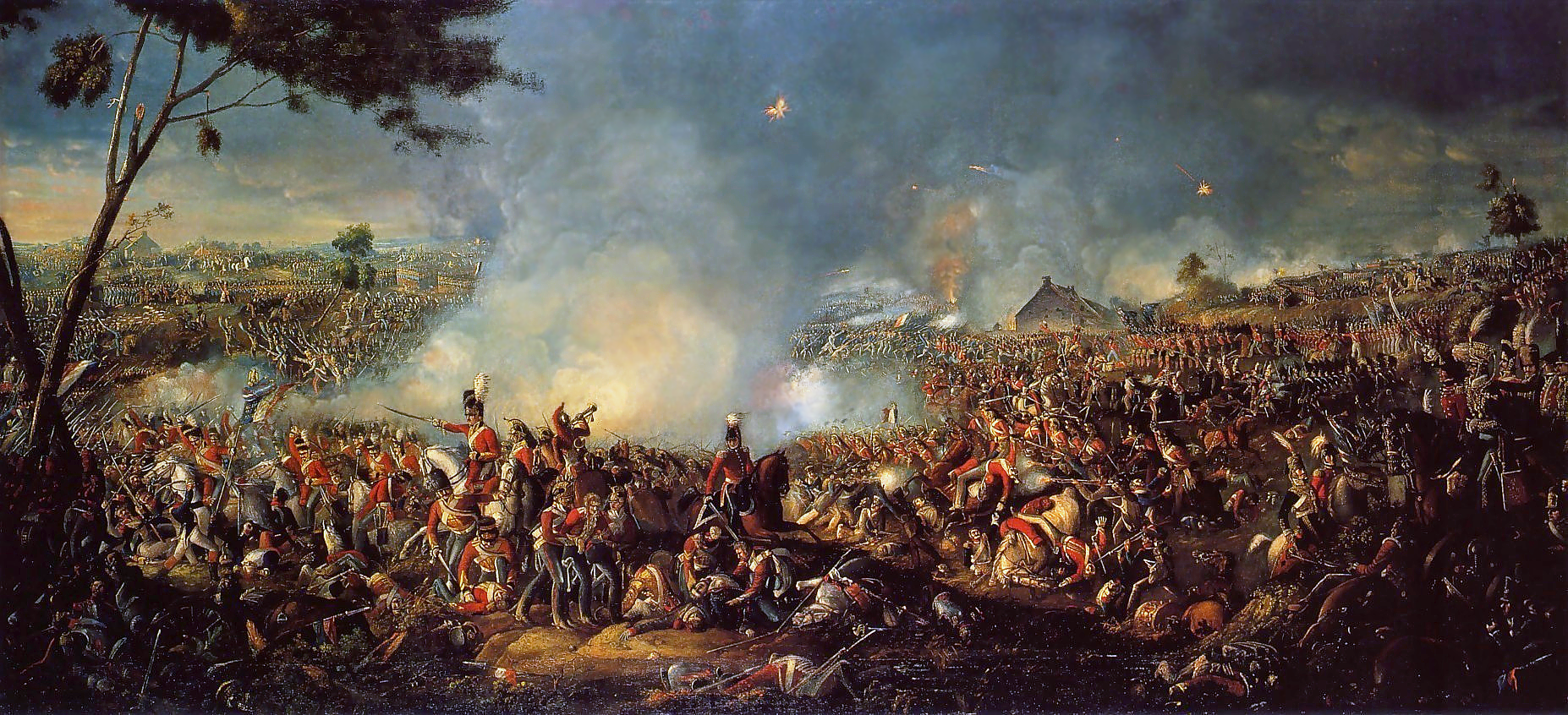
What Similarities Exist Between Soldiers At Waterloo And Those Serving Today?
Is it reasonable to assume any similarities between soldiers, say, in the Household Cavalry today, and those who Wellington himself described as "the scum of the Earth?" Or have the advances of modern warfare, heavily altered during the significant conflicts of the 20th century, placed an insurmountable wedge between the characteristics of those on the battlefield of Waterloo, compared to those on operations in Estonia?
Alex was keen to draw attention to both the apparent parallels and perhaps the less obvious in painting a picture of the two types of soldiers. He said:
"Waterloo was one of the first instances when all ranks were rewarded with a medal. Gallantry medals were yet to be instated, but I imagine Styles would have received a Victoria Cross were they to have existed in 1815. But in many ways, Styles was just the right man at the right place at the right time.
Every man who charged with him – 2,000 British cavalrymen against some 20,000 Frenchmen – deserved recognition that day. But that's what soldiering is like.
They weren't doing it for a medal (they didn't have them before this anyway), they weren't doing it for Wellington or even for King and Country. They were doing it for the man to their right and left. That's what soldiering has always been about, and that is the greatest lesson we can take away from these stories at Waterloo."
When Is The Exhibition On Until?
Thanks to the quick work of Regimental historians, Francis Styles' Waterloo medal will be on permanent displace at the Horse Guards site the museum occupies.
However, the Eagle goes back to the National Army Museum in September. So, those who wish to see these two linked artefacts together have until September 26 to visit the exhibition.
For more information on the Household Cavalry Museum, visit their website at www.householdcavalry.co.uk/museum.




